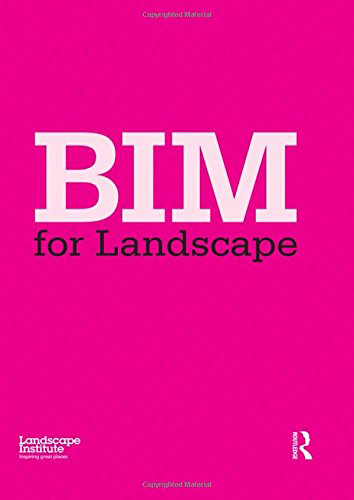BIM for Landscape, the first BIM book to focus on landscape, was officially launched last week. The author of the book, Henry Fenby-Taylor, BIM implementation manager at WYG and chair of BIM4Landscape, explains why the landscape profession needed a dedicated BIM title.
The need was quite clear. Everyone was talking about BIM, some enthusiastically, some with trepidation, but they were often talking about different things. So when news of the BIM Level 2 mandate came about people didn’t know where to pin their colours. People needed guidance about what specifically they needed to do.
The Landscape Institute had been running BIM masterclasses which defined the process required to operate a BIM Level 2 project. These were useful to the attendees and gave the Institute the appetite to pursue a BIM book. There was a lot of content from the masterclasses, but to get that knowledge from reading required downloading the standards and going through them.
I realised that the book needed to be unique. I pitched it, therefore, with three very specific outcomes in mind.
First, that people with a business to run should be able to talk knowledgeably about BIM without any technical requirements.
Second, that those implementing BIM Level 2 on projects and implementing BIM in their organisations should have a framework within which to work.
And third, that there should be a guide to the use of technology that transcended mundane how tos, and struck at the heart of BIM.
Landscape architects are in a unique position as they work across disciplines from civil engineering to planning to architecture. The software and processes already in place often reflect this. BIM for Landscape, then, is a microcosm of BIM on a wider scale.
It uses a variety of software techniques, because it needs to achieve a host of different outputs from visualisations to planting plans. It fits in with a variety of different processes, because its outcomes are varied, from planning permission to remediated soil.
Read related article
Review: A world first for landscape architects
Peter Owens, managing director of Colour Urban Design, set me right on this. I saw it as a weakness, as a flaw. He corrected me and showed me that this breadth of knowledge is what every professional, from design to engineering and everything in between, will soon have to manage. How can we collaborate with others if we don’t know what they do?
This book is an extension of that collaborative thinking embodied by Colour where I worked while writing the book and whose support led this outcome. It is focused not upon an insular, inward looking profession trying to stay relevant, but on a bold profession, looking to the horizon and itching to take on the opportunities that the future brings.
While I was working with Colour Urban Design and Teesside University, BIM was emerging as a distinct process within landscape at the time and working within a practice at the leading edge gave me an opportunity to share some of this knowledge.
I think the built environment is beginning to change, we can often be very closed and guarded about our knowledge, after all we are dealing in intellectual property every day, whether it is giving away designs or schematics. However, one thing I learned from Colour is that a willingness for change was really all that was necessary.
There are a lot of technical aspects to BIM and BIM Level 2 and we go through these in the book, describing in detail how to respond to the project documents that are issued as part of the project lifecycle. However, just by listening in detail to what your co-consultants aspire to, by listening to your clients you’ll find yourself doing BIM sooner or later, so why not help?
BIM for Landscape is available here.

The book is focused not upon an insular, inward looking profession trying to stay relevant, but on a bold profession, looking to the horizon and itching to take on the opportunities that the future brings.– Henry Fenby-Taylor











